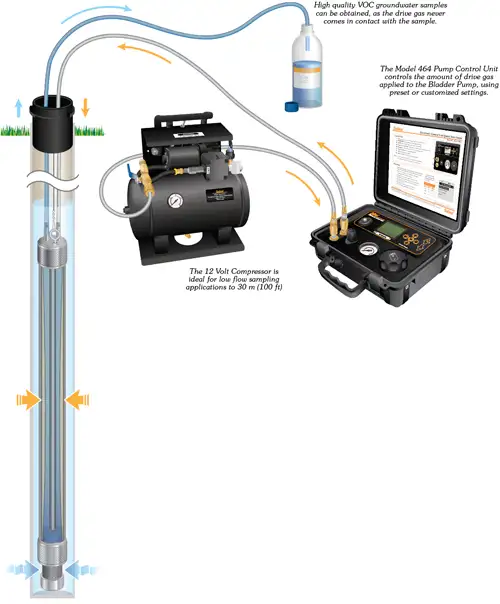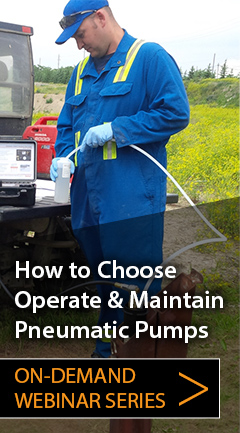Higher Groundwater Sampling Flow Rates
When larger groundwater purge volumes are required, Solinst Bladder Pumps can deliver flow rates up to 1.5 L/min.
Alternatively, a Solinst Stainless Steel Double Valve Pump (DVP) is an option. These pneumatic drive DVPs can provide higher flow rates and sample from greater depths than most Bladder Pumps.
Flow rates vary with the depth of the pump below the surface, depth below water level, size of the drive and sample tubing, drive and vent cycle times, gas pressure applied and aquifer recharge.
Flow rates of the Solinst Bladder Pump and the Double Valve Pump compare favourably with published data for similar types and sizes of pumps under similar conditions.
For example:
1.66" x 2 ft (42 mm x 610 mm) Bladder Pump at 100 psi, with 1/4" OD drive line and 3/8" OD sample line; 50 ft (15 m) below grade with 25 ft (7.5 m) below water level gives 1.5 L/min.
Bladder Pump Operation
When an Solinst Bladder Pump is lowered into a well, hydrostatic pressure allows formation water to enter the central Santoprene chamber (the bladder) through the inlet filter and fill to a static level.
When compressed air or gas is applied to the drive line, it pressurizes the space around the bladder, causing it to collapse and pushing the water up into the sample line.
Check valves ensure that no water flows back down through the pump or into the formation.
When compressed air or gas is vented (released), more formation water enters the bladder. When the pressure is reapplied, the fresh formation water is pushed towards the surface.
The pressure/vent cycles are repeated, providing a steady flow of water up the sample line without stripping volatiles from the sample. Due to the low flow rates and gentle pumping action, turbidity is minimized.
Thus, a high-quality VOC groundwater sample is obtained.




